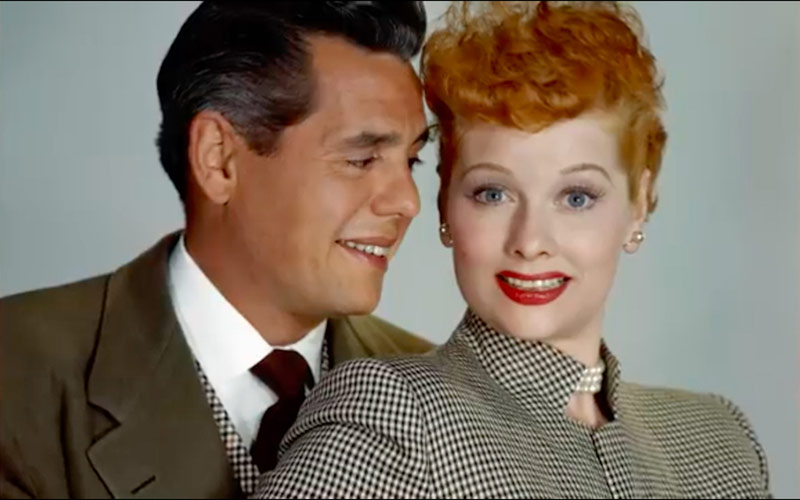Journalist and author Todd S. Purdum tells a well-researched and absorbing story of the life and times of Desi Arnaz, Cuban-born musical talent, businessman, and former husband to Lucille Ball.
Desi Arnaz was born on March 2, 1917 in Santiago de Cuba to Cuban politician Desiderio Alberto Arnaz y de Alberni II and Dolores, the daughter of a Bacardí rum salesman. One of the first formative events to shape the young Arnaz’s life took place in 1933, when, as a result of the Cuban Revolution, his family fled the island and landed in Miami.
Arnaz began life as a descendant of Cuban aristocrats, but his family’s financial situation in America forced him to clean canary cages to make money. Despite this, from a young age, Arnaz nurtured an interest in music that led to the making of the Desi Arnaz Orchestra, a band that would lead him into New York City’s club scene and inaugurate a lifelong career in show business.
Today, Desi Arnaz is best known for his dual role as husband to the hilarious Lucille Ball and as the fictional husband to her eponymous character on the classic American sitcom I Love Lucy, from which his singsong pronunciation of unforgettable lines like “Lucy, I’m home!” and “Lucy, you got some ‘splainin’ to do!” have been imprinted in the minds of millions of viewers.
A new biography from the writer Todd S. Purdum also makes the case that Arnaz was more than just a husband to a beloved comedic actress. Arnaz was also, as Purdum reminds us in Desi Arnaz: The Man Who Invented Television (368 pgs., Simon & Schuster, 2025, $29.99), a masterly musical and entertainment talent, an accomplished image of Latino representation in the twentieth century, and an innovative entrepreneur whose business acumen as a producer and co-founder of the production company Desilu Productions helped to not only cultivate his and his wife’s critical success in the entertainment industry but also, as the subtitle of the biography attempts to persuade readers, (re)invent television or at least the form of television that contemporary viewers watch today.
To characterize Arnaz as “the man who invented television” is, of course, a tremendously grand claim, and one which reads as a glaring act of editorializing on the part of the publisher and editors, and which might imply to the reader that the biography is full of rosy depictions and an idealized version of its subject’s life.
A veteran journalist and author of the two books Something Wonderful: Rodgers and Hammerstein’s Broadway Revolution and An Idea Whose Time Has Come: Two Presidents, Two Parties, and the Battle for the Civil Rights Act of 1964, Purdum, however, presents an honest and clear-eyed account of Arnaz’s life, an account that advocates for the triumphs of his legacy and acknowledges the lapses in his character.
Purdum takes a direct approach in spelling out the ways that Arnaz shaped the television business, specifically his contributions to producing a TV series with a live studio audience: “It was Arnaz (and I Love Lucy’s head writer and producer Jess Oppenheimer) who assembled the world-class team of Hollywood technicians who figured out how to light and film the show in front of a live studio audience, with three cameras in sync at once—a then-pathbreaking method that soon became an industry standard for situation comedies that endures to this day.”
Purdum goes on to write, “It was
Purdum does not shy away from admitting the tension between Arnaz’s professional life and his private life, the former marked by accomplishments such as unparalleled deals for his TV shows, and the latter marked by rocky relationships and alcoholism. While the professional relationship between Arnaz and Lucille Ball brought them joint success, their personal relationship and marriage, which ended in divorce in 1960, could be described as uneven.
In recounting the year before their divorce, Purdum notes that “Lucy had plenty to be sad and angry about, as the gulf between Desi’s professional accomplishments and his personal irresponsibility continued to widen.” That “personal irresponsibility” could refer to a tendency in Arnaz’s character that Purdum hinted to at various points in the biography: “At the pinnacle of his achievement, [Arnaz] became a victim of his own success, the pressures of which accelerated a spiral into alcoholism and compulsive patronage of prostitutes.”
By depicting all these layers to Arnaz, Purdum delves deep in exploring questions that help us to understand his life: How did Arnaz innovate television production and distribution? What role did Arnaz have in defining the success of I Love Lucy? What was the professional and personal relationship between Arnaz and Lucille Ball really like? And importantly what were the limits to his legacy?
With Desi Arnaz: The Man Who Invented Television, Purdum supplies readers with one piece of a larger puzzle explaining the transformations in Hollywood and the entertainment business in the twentieth century, but delivers a full portrait of a man whose contributions were considerable.
(By Luis Polanco)
Audio Version (a DV Works service)


Leave A Comment